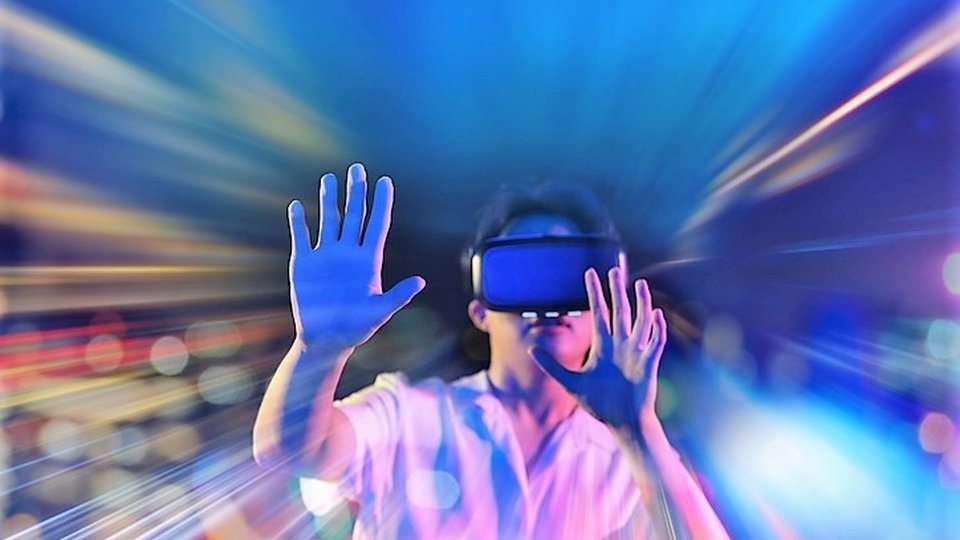Commentary
Recovery drives versatile VR entertainment formats
An audience that has been in enforced isolation is now more than hungry to socialize once again, and marketing, promotional and entertainment live events will play a major part in the re-emergence of social fun.

June 14, 2021 by Kevin Williams
As pandemic restrictions ease, consumers seek access to immersive entertainment that can be readily deployed in parking lots and other free space. This will be a distinction of this phase in the industry's post-lockdown growth.
As observed last week, mobile VR has certainly taken the lead in delivering "transportable" or "containerized" entertainment.
One of the first North American dedicated mobile VR arcade trailers was from Canadian start-up Mobile Reality, with its "Titan Trailer." Eight VR game stations were incorporated into the design, offering virtual flight and racing competition.
Launched in 2018, the concept was rolled out to offer a high-end VR experience that could be deployed at live events and fairgrounds. The ability to offer a strong quality VR experience in an easily mobile package was seen, even before the changed conditions of 2020, as increasingly important.
The game trailer scene
When talking about mobile gaming, we need to be mindful of the already existing business of the game trailer scene. Birthday party orientated, hired game trailers were a popular "retirement investment" for some. Such systems offer a trailer filled with console gaming that can be deployed on the street of those hiring the event.
Some of these game trailers have expanded to include VR gaming and e-sports elements — and we have even seen escape room mobile installations. It is expected the "have games will travel" element of the entertainment scene will again prove a popular draw post-lockdown.
Playmind Studios and its "Playbox" offers a unique take on the portable immersive entertainment experience. Playbox provides a high-quality giant LED screen as part of the 20-foot container configuration, with players throwing balls at the screen which runs a 3-minute game for up to six players from a catalogue of 12 titles, including examples such as "Axe Throw" and "Zombies!"
Fairgrounds, live events
The "Playbox" is a unique outdoor interactive entertainment experience that opens the door to the next generation of fairground and live event experiences. The "Playbox" comes with a management and operation tool, the "Playbox Online Platform," and the company has developed various versions of the Playbox for outdoor, indoor and mobile.
Beyond VR, the other aspect of immersive entertainment being supported by a containerized deployment is e-sports, which deregulation unleashed a few years prior to the pandemic.
Amega Entertainment has revealed its latest product, the "E-Racing Container," which incorporates four of the company's "2DoF" rally racing simulators networked to offer multiplayer action while the rest of the container is equipped to supply a café-bar area as well as support spectators. Screens and seating support live streaming and live stats-of-the-race happening in the simulators.
The system can be deployed in only a few hours from the standard container, offering a simple plug-and-play solution for retail and live event venues. Within this concept, the entertainment finds the audience, rather than the other way round. The platform is totally customizable, able to accommodate an upstairs terrace and includes LED illuminated signage.
Traveling exhibits
We also need to consider the less promoted traveling exhibition. This is a new aspect of the live event market, popular with museums, galleries and special venues.
A great example of the growth in interactive exhibitions building off entertainment was announced with "Crayola IDEAworks: The Creativity Exhibition." Aimed at children between the ages of six and 12, the exhibit is split into parts comprising "Workshop," "Colorverse" and the "Grand Finale."
It allows the guests wearing wristbands to express through play within the environment based on the popular children's activity. The exhibit comprises a multitude of interactive elements and stations for the guests to use, produced by Agency808. This level of engagement and interactivity will be seen from other temporary exhibitions looking to offer compelling entertainment.
Combining several new immersive exhibits, the operation has partnered with projection specialist Epson, which is sponsoring the exhibit. The corporation's 4k projectors are used throughout the experience, and it is being launched at Franklin Institute before starting a multi-U.S. city tour.
Live events has been an aspect of our industry in deep hibernation during this period of upheaval. For more than 12 months, the idea of holding live events has been a tantalizing prospect, suspended while the world dealt with the impacts of the pandemic.
As many observers have speculated, and growing momentum seems to confirm that an audience that has been in enforced isolation is now more than hungry to socialize once again, and marketing, promotional and entertainment live events will play a major part in the re-emergence of social fun.
We expect in the coming months there will be an influx of new developers, as well as early adopters of mobile entertainment systems.
(Editor's note: Extracts from this blog are from recent coverage in The Stinger Report, published by KWP and its director, Kevin Williams, the leading interactive out-of-home entertainment news service covering the immersive frontier and beyond.)
About Kevin Williams
Along with advisory positions with other entrants into the market he is founder and publisher of the Stinger Report, “a-must-read” e-zine for those working or investing in the amusement, attractions and entertainment industry. He is a prolific writer and provides regular news columns for main trade publications. He also travels the globe as a keynote speaker, moderator and panelist at numerous industry conferences and events. Author of “The Out-of-Home Immersive Entertainment Frontier: Expanding Interactive Boundaries in Leisure Facilities,” the only book on this aspect of the market, with the second edition scheduled for a 2023 release.







